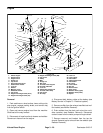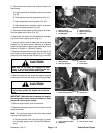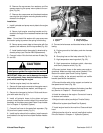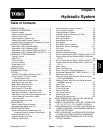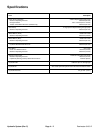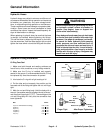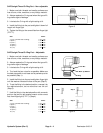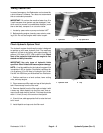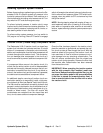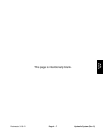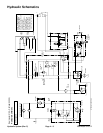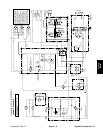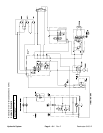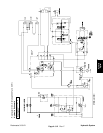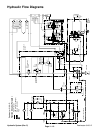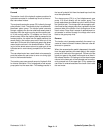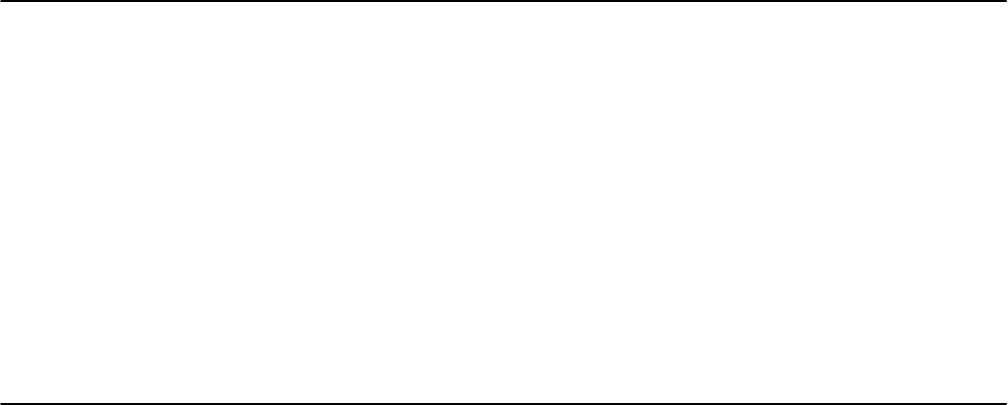
Rev. D
Reelmaster 3100−DHydraulic System (Rev. C) Page 4 − 6
Relieving Hydraulic System Pressure
Before disconnecting or performing any work on the Re-
elmaster 3100−D hydraulic system, all pressure in the
hydraulic system must be relieved. Park machine on a
level surface with the cutting units lowered and off. Turn
key switch to OFF and allow engine to stop.
To relieve hydraulic pressure in traction circuit, move
traction lever to both forward and reverse directions. To
relieve hydraulic pressure in steering and lift circuits, ro-
tate steering wheel in both directions.
To relieve cutting system pressure, turn key switch to
ON (engine not running). Move PTO switch to engage
which will energize the solenoid valve on hydraulic man-
ifold to relieve circuit pressure. Move PTO switch to dis-
engage, return key switch to OFF and remove key from
the ignition switch.
NOTE: Moving steering wheel with engine off may un-
seat implement relief valve. If steering or lift circuits ap-
pear weak or inoperative after machine is returned to
service, repeat relieving hydraulic system pressure pro-
cedure.
Traction Circuit (Closed Loop) Component Failure
The Reelmaster 3100−D traction circuit is a closed loop
system that includes the hydrostat and two (2) wheel
motors. If a component in the traction circuit should fail,
debris and contamination from the failed component will
circulate throughout the traction circuit. This contamina-
tion can damage other components in the circuit so it
must be removed to prevent additional component fail-
ure.
If a component failure occurs in the traction circuit, it is
critical that the entire traction circuit be disassembled,
drained and thoroughly cleaned to ensure that all con-
tamination is removed from the circuit. If any debris re-
mains in the traction circuit and the machine is operated,
the debris can cause additional component failure.
An additional step for removing all traction circuit con-
tamination would be to temporarily install a high pres-
sure hydraulic oil filter (see Special Tools) into the circuit.
The filter could be used when connecting hydraulic test
gauges in order to test traction circuit components or af-
ter replacing a failed traction circuit component (e.g. hy-
drostat or wheel motor). The filter will ensure that
contaminates are removed from the closed loop and
thus, do not cause additional component damage.
Once the filter has been placed in the traction circuit,
place the machine on jack stands and operate the trac-
tion circuit to allow oil flow through the circuit. With the
machine raised off the ground, the traction circuit will
have maximum oil flow at minimum pressure to mini-
mize damage from any remaining contamination. The
filter will remove contamination from the closed loop
traction circuit during operation. Remove the filter from
the machine after contamination has been removed
from the traction circuit.
IMPORTANT: When operating the traction system
with the high pressure filter installed, make sure
that flow is always directed through the filter (e.g. do
not press the traction pedal in the reverse direction
if the filter is placed for forward direction flow). If
flow is reversed, debris from the filter will re−enter
the traction circuit.



